Abstract
Undercooked and raw meat has been linked to outbreaks of hemorrhagic diarrhea due to the presence of Escherichia coli O157:H7; therefore, treatment with ionizing radiation was investigated as a potential method for the elimination of this organism. Response-surface methods were used to study the effects of irradiation dose (0 to 2.0 kGy), temperature (-20 to +20 degrees C), and atmosphere (air and vacuum) on E. coli O157:H7 in mechanically deboned chicken meat. Differences in irradiation dose and temperature significantly affected the results. Ninety percent of the viable E. coli in chicken meat was eliminated by doses of 0.27 kGy at +5 degrees C and 0.42 kGy at -5 degrees C. Small, but significant, differences in radiation resistance by E. coli were found when finely ground lean beef rather than chicken was the substrate. Unlike nonirradiated samples, no measurable verotoxin was found in finely ground lean beef which had been inoculated with 10(4.8) CFU of E. coli O157:H7 per g, irradiated at a minimum dose of 1.5 kGy, and temperature abused at 35 degrees C for 20 h. Irradiation is an effective method to control this food-borne pathogen.
Full text
PDF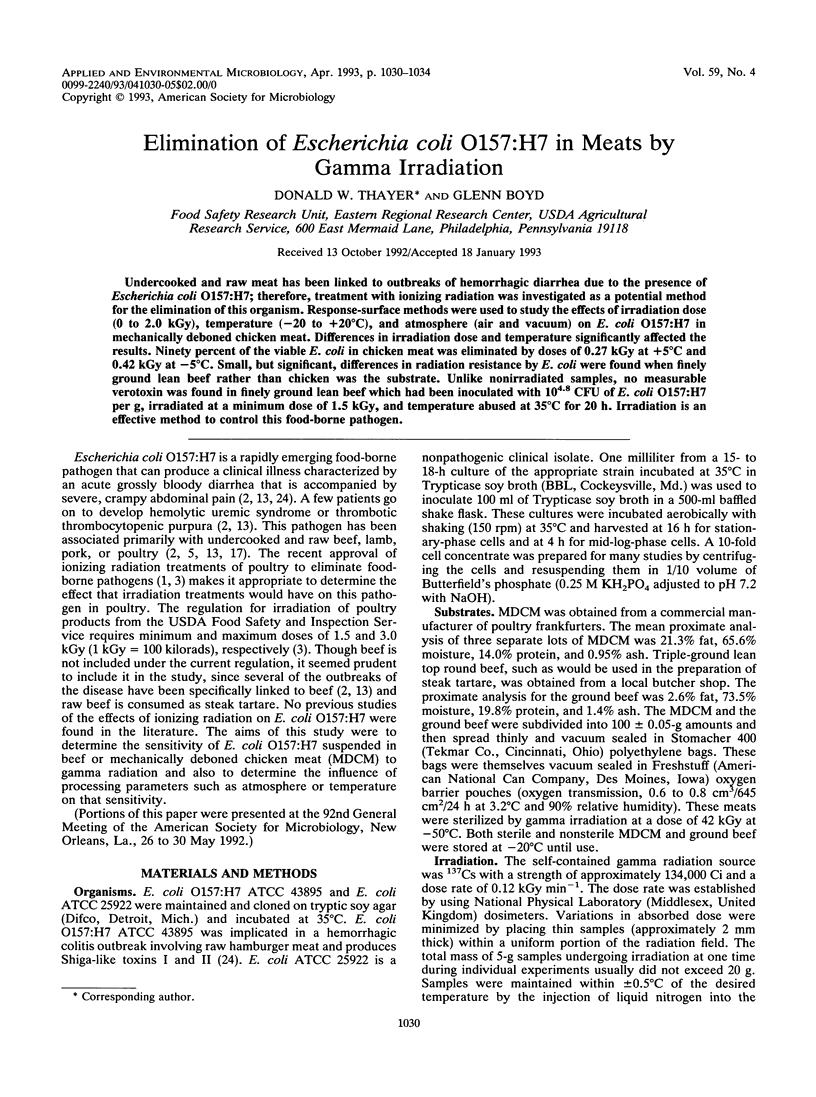
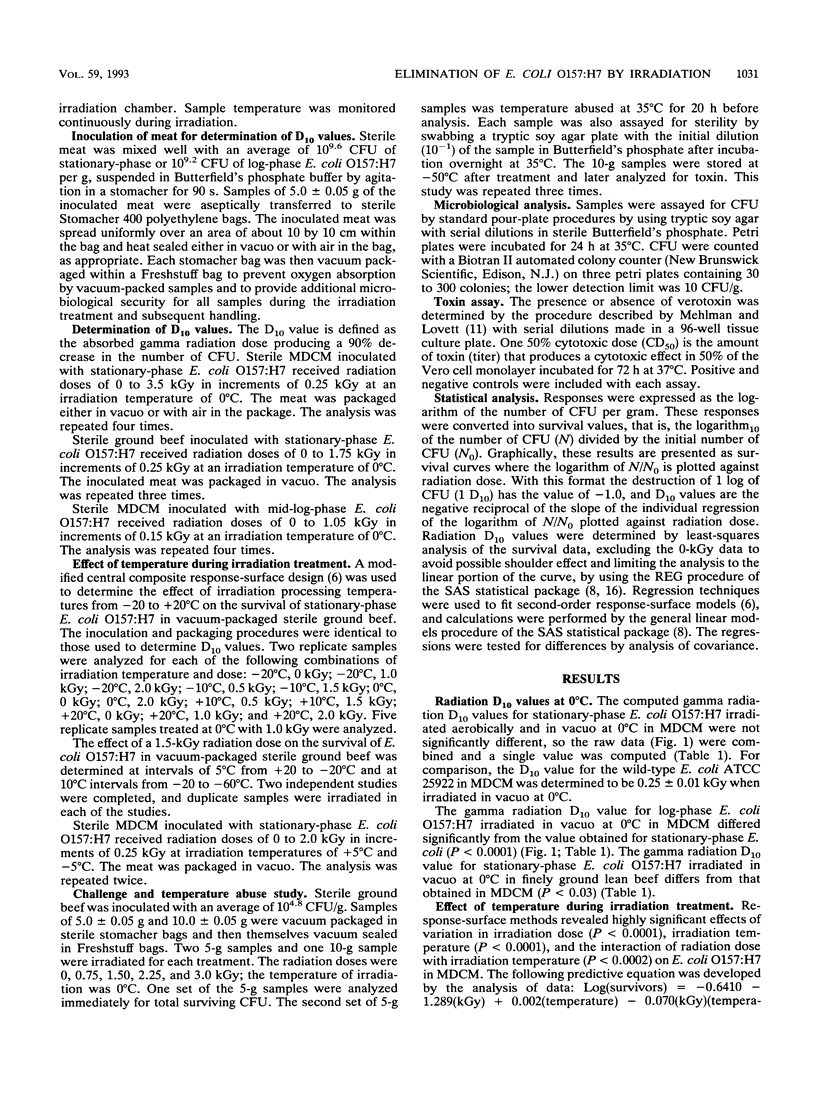
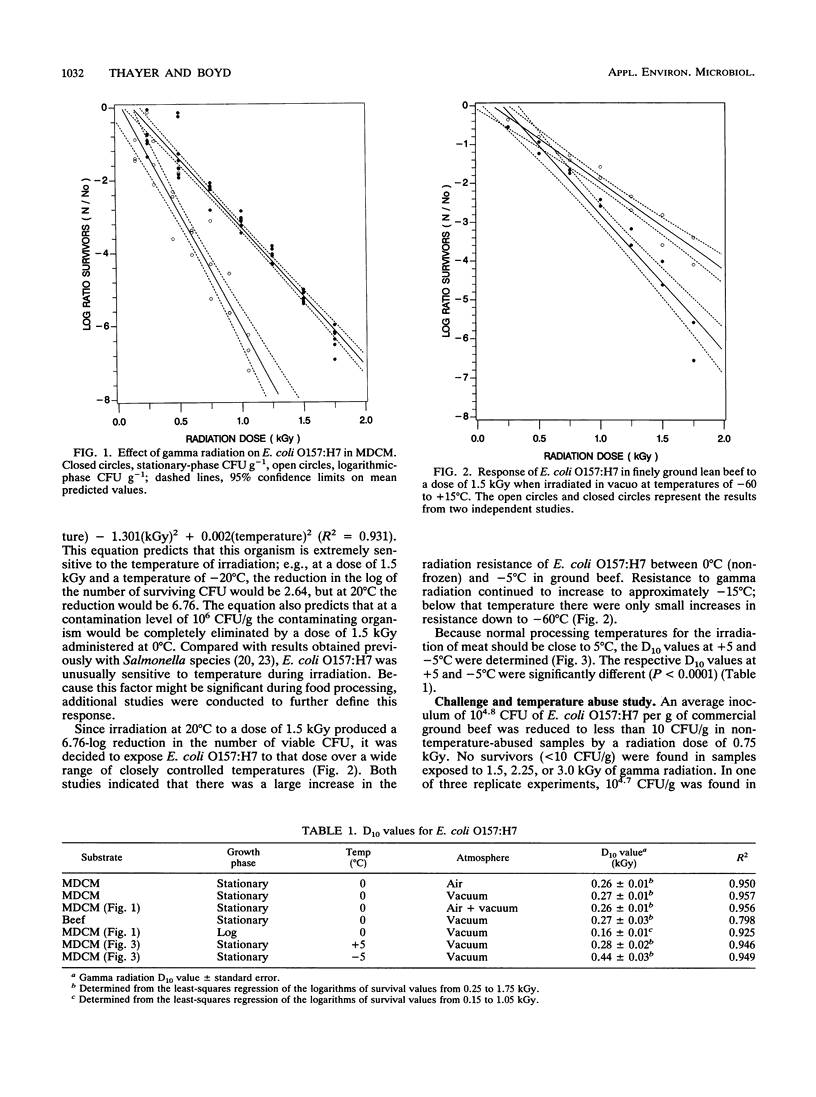
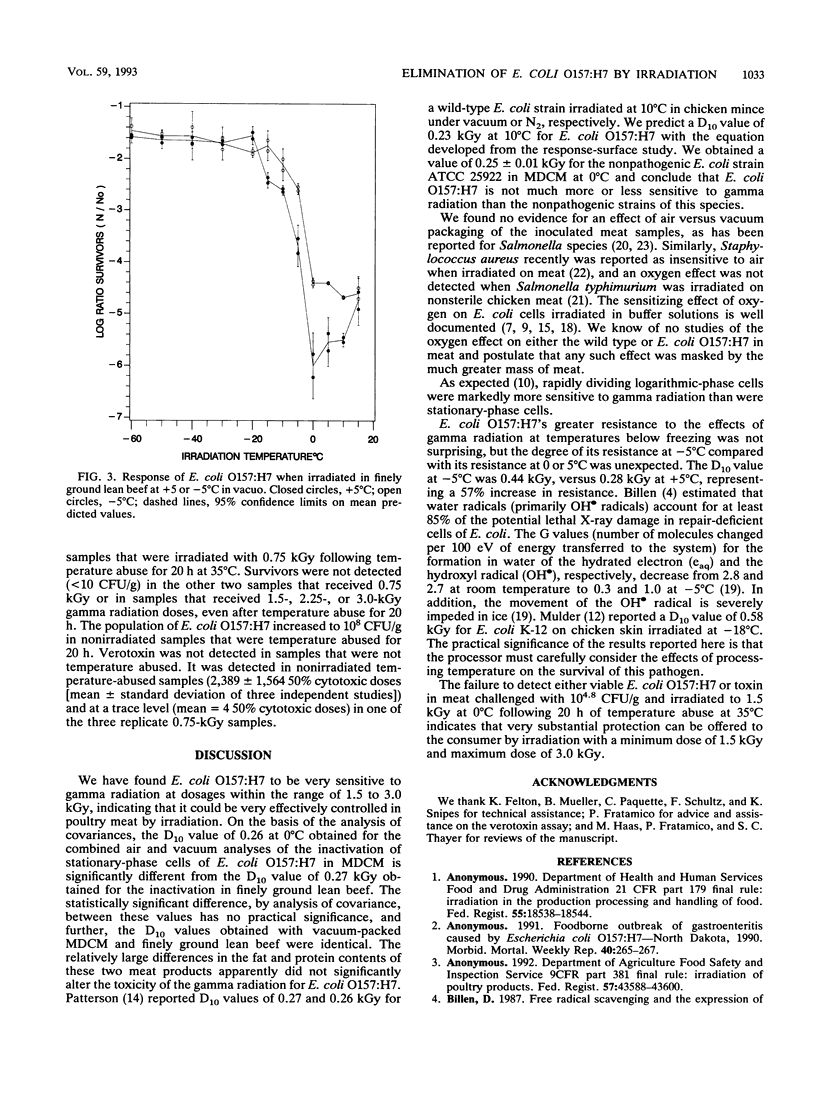
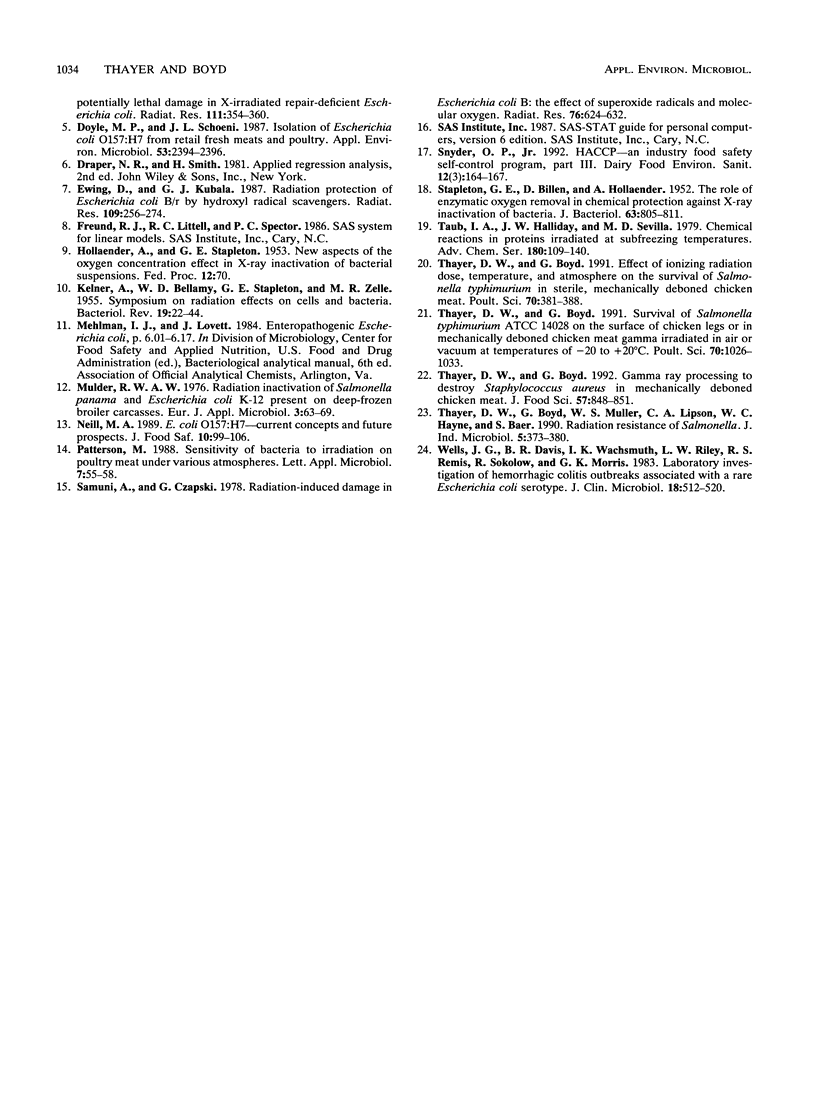
Selected References
These references are in PubMed. This may not be the complete list of references from this article.
- Billen D. Free radical scavenging and the expression of potentially lethal damage in X-irradiated repair-deficient Escherichia coli. Radiat Res. 1987 Aug;111(2):354–360. [PubMed] [Google Scholar]
- Doyle M. P., Schoeni J. L. Isolation of Escherichia coli O157:H7 from retail fresh meats and poultry. Appl Environ Microbiol. 1987 Oct;53(10):2394–2396. doi: 10.1128/aem.53.10.2394-2396.1987. [DOI] [PMC free article] [PubMed] [Google Scholar]
- Ewing D., Kubala G. J. Radiation protection of Escherichia coli B/r by hydroxyl radical scavengers. Radiat Res. 1987 Feb;109(2):256–274. [PubMed] [Google Scholar]
- KELNER A., BELLAMY W. D., STAPLETON G. E., ZELLE M. R. Symposium on radiation effects on cells and bacteria. Bacteriol Rev. 1955 Mar;19(1):22–44. doi: 10.1128/br.19.1.22-44.1955. [DOI] [PMC free article] [PubMed] [Google Scholar]
- STAPLETON G. E., BILLEN D., HOLLAENDER A. The role of enzymatic oxygen removal in chemical protection against x-ray inactivation of bacteria. J Bacteriol. 1952 Jun;63(6):805–811. doi: 10.1128/jb.63.6.805-811.1952. [DOI] [PMC free article] [PubMed] [Google Scholar]
- Samuni A., Czapski G. Radiation-induced damage in Escherichia coli B: the effect of superoxide radicals and molecular oxygen. Radiat Res. 1978 Dec;76(3):624–632. [PubMed] [Google Scholar]
- Thayer D. W., Boyd G. Effect of ionizing radiation dose, temperature, and atmosphere on the survival of Salmonella typhimurium in sterile, mechanically deboned chicken meat. Poult Sci. 1991 Feb;70(2):381–388. doi: 10.3382/ps.0700381. [DOI] [PubMed] [Google Scholar]
- Thayer D. W., Boyd G. Survival of Salmonella typhimurium ATCC 14028 on the surface of chicken legs or in mechanically deboned chicken meat gamma irradiated in air or vacuum at temperatures of -20 to +20 C. Poult Sci. 1991 Apr;70(4):1026–1033. doi: 10.3382/ps.0701026. [DOI] [PubMed] [Google Scholar]
- Wells J. G., Davis B. R., Wachsmuth I. K., Riley L. W., Remis R. S., Sokolow R., Morris G. K. Laboratory investigation of hemorrhagic colitis outbreaks associated with a rare Escherichia coli serotype. J Clin Microbiol. 1983 Sep;18(3):512–520. doi: 10.1128/jcm.18.3.512-520.1983. [DOI] [PMC free article] [PubMed] [Google Scholar]


